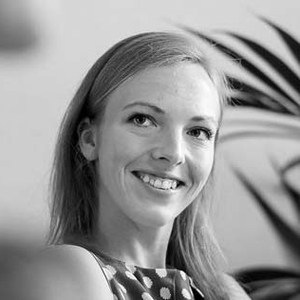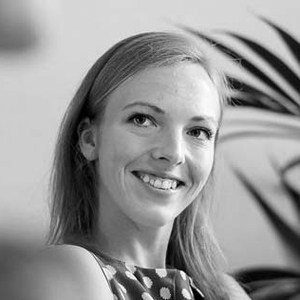Climate protection begins at (the) home

“Passive House has been around for more than 25 years and the market is changing. I feel that we are at a turning point where the uptake has been growing steadily and now the name Passive House is on a lot of peoples’ tongues. It’s gone from a little-noticed concept to a standard that is being increasingly recognised as a tried-and-tested solution for significantly reducing the carbon footprint of buildings.”
Jessica Grove-Smith is a physicist at the Passive House Institute who uses her expertise to create energy models for Passive House projects – anything from single-family homes, apartment buildings, offices, schools or other educational buildings. As a building standard it is utterly uncompromising on the need to conserve energy. To do this, the Passive House Institute has developed energy performance targets and a design process that balances exceptional insulation, airtightness, eliminates thermal bridges, includes mechanical ventilation with heat recovery and triple-glazed windows to deliver buildings that are exceptionally quiet, healthy and cheap to operate in terms of carbon and money.
“I really love my job and working here
at the Passive House Institute. We are a very diverse team coming from
different backgrounds, bringing together our own skillsets, sharing our
experiences within the Institute and with our partners worldwide. It’s a very
close knit network with people who are all working towards the same goal.”

“We need a drastic change in how people approach building…”
Making up 40% of the total, buildings account for
the largest share of Europe’s final energy consumption, so the need for change
is clear. So far, it seems like ambitious cities have played a key role in the
global expansion of the Passive House standard.
“Climate protection begins locally and our experience so far has confirmed that it is often easier and quicker to move things on a municipal level. As such, we are engaged with municipalities to influence their specific local projects. The City of Heidelberg for example has a whole district, the Bahnstadt District, built entirely to the Passive House standard. And there are many other examples of local authorities embracing Passive House as a highly energy efficient standard to reach their climate goals. The City of Vancouver for instance, has a clear plan to achieve zero emissions in new buildings by 2030 specifically integrating Passive House as a compliance path.
What always
fascinates me is the visibility of such schemes and their potential to inspire and
initiate change. So Heidelberg was picked up in China. And now in Gaobeidian (about 100km south of Beijing) they have a
district named after the Heidelberg Bahnstadt (German for Railway City), which
they are building to the Passive House standard. It will be the biggest Passive
House development in the world.”
What does it take for a city to get started in
building to the Passive House standard?
Having just one driven individual who has committed to wanting to make a
change and who has identified high efficiency buildings as a solution for the
construction sector can make all the difference. An advocate who collaborates with
the local practitioners, who identifies with the solution, and brings them both
together. Once you start the conversation, it goes from there. It is ultimately
about finding mechanisms that work in the local context. Supporting frontrunner
projects – financially or by helping to navigate and remove regulatory
challenges – creates a positive dynamic and will create market demand for
components and for trained practitioners with the needed expertise. One very
effective approach to stimulate change is for municipalities to lead the way by
ensuring their own buildings conform to the high efficiency standard. Similarly,
land use permits can be linked to efficiency requirements and quality assurance
processes. Regardless of the mechanisms, communicating a clear direction of
long-term policy intentions and making sure that quality assurance processes
are in place are instrumental for sector transformation, as this provides
clarity and certainty.

But it’s not just cities that are involved. You also need to
work with a very traditional, conservative construction industry.
The construction industry in general is conservative, yes, and slow to change. We really need to make a quicker impact. We need a drastic change in how people approach building and we especially need architects and developers to think about buildings differently. There is not enough awareness about the significant role that design choices play for a building’s climate impact – especially the necessity for reducing the heating demand in Europe to effectively lower the carbon footprint. And that’s exactly what the Passive House does: It reduces the heating demand by 90% compared to the building stock.
Our
worldwide network, the International Passive House Association, continuously
shares good practice experiences to raise this awareness – amongst
professionals but also the general public. We work directly with manufacturers
to help get more highly efficient products available on the market. Another
area of our work is to provide training. Sharing the knowledge gained since the
first Passive House project was built in 1991 and all of the great projects
around the world that followed. What I’d certainly like to see more of is an
uptake of that knowledge in universities to support the next generation to keep
up with the industry as those necessary changes are being made.
Construction is also a male-dominated field. As a woman who
is trying to change things, does the reaction to your gender ever affect your
work?
Yes, it
does at times. It doesn’t affect my daily work because around 50% of the staff here
at the institute are women and we are quite a young and diverse team. At events
and conferences and in project meetings it does always strike me that the
industry is very male-dominated, yes. So I am happy to see more and more active
efforts being made to raise awareness for the need of more equality and
diversity in this sector and I am honoured to know and work with many strong
women from different parts of the world who are passionate about making a
difference and will have their voice heard.
Passive House is clearly part of the solution to the challenge of
climate change. But right now things seem to be getting much worse, much faster
than many people thought. Does the barrage of bad news on the climate front
ever overwhelm you?
Yes,
definitely. There are moments when I think, is this even possible? Can we still
turn things around? The challenge we face is very daunting. What keeps me going
is that I am absolutely convinced that by working here, by doing the job I do
every day, by talking to people, by encouraging change, I am making a
difference. The Passive House Institute and the entire international network
connected to us is contributing to making positive change. The challenge may be
daunting, but it also drives me and the team. Climate change gives us the
urgency to insist that we have these solutions. We need to take the problems
seriously. But let’s also be aware of the solutions, let’s talk about them more
and let’s implement them at scale.
The post Climate protection begins at (the) home appeared first on Energy Cities.
Fuente: ENERGY CITIES
Enlace a la noticia: Climate protection begins at (the) home

